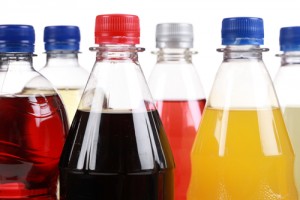
Coca-Cola’s attorneys fired back at Pom during its closing statements, arguing that Pom itself had made its own misleading marketing statements about the health benefits of its pomegranate juice products asserting an unclean hands defense.
The closing arguments in this trial represent a small part of the legal saga that originally started in a California federal court in 2008 and went all the way to the U.S. Supreme Court. The underlying case involved allegations by Pom that Coca-Cola had violated the Lanham Act (federal trademark law) and California state law for misleading consumers by deceptive labelling. Early in its defense, Coca-Cola argued that FDA regulations under the Federal Food, Drug, and Cosmetic Act (FDCA) expressly authorized the name and labeling of its juice, thus precluding any Lanham Act claim, and preempting state law claims. The trial court largely agreed with Coca-Cola and dismissed Pom’s Lanham Act claims related to name and labeling as impermissibly challenging the FDA’s regulations on the subject. The court also dismissed Pom’s state law claims as being preempted by the FDCA.
Pom appealed the trial court decision to the Ninth Circuit Court of Appeals, which largely upheld the lower court decision. The Ninth Circuit concluded that Pom’s claims conflicted with the FDCA regulations and the FDA’s authority to guard against deception in labeling, in essence holding that it was up to the FDA to challenge food and beverage labels, not private parties.
Subsequently, the U.S. Supreme Court granted certiorari to consider whether a private entity, such as Pom could challenge a food label regulated by the FDA under the FDCA. In an 8-0 decision, the U.S. Supreme Court reversed the decisions of the lower courts finding that the Lanham Act and FDCA were not in conflict, and instead complemented each other. Justice Kennedy noted in the opinion that the FDA “does not have the same perspective or expertise in assessing market dynamics that day-to-day competitors possess,” and further stated that competitors’ “awareness of unfair competition practices may be far more immediate and accurate than that of agency rule makers and regulators.” During oral argument, Justice Ginsburg seemed to suggest the direction of the Court when she commented that “[i]n the real world, the FDA has a tremendous amount of things on its plate, and labels for juices are not really high on its list. It has very limited resources.”
The immediate impact of the Supreme Court decision that the FDCA does not preclude Lanham Act suits by competitors is that the case of POM Wonderful LLC v. Coca-Cola Co. was allowed to go forward and be decided by a jury. However, the longer term impact remains to be seen. It’s quite possible that litigation amongst food and beverage industry companies may ramp up as a result. Irrespective of any litigation however, this decision is likely to motivate industry participants to invest more strategic thought and legal resources in the labeling of their own products as well as policing the product labels of their competitors.